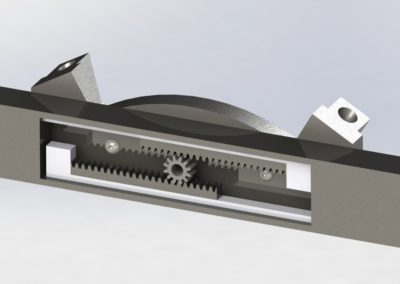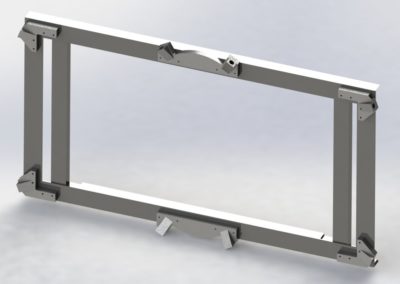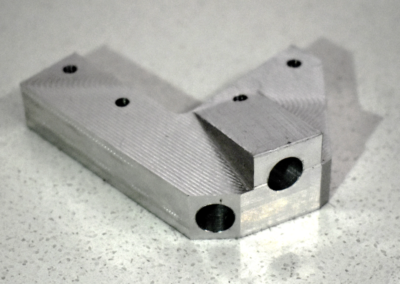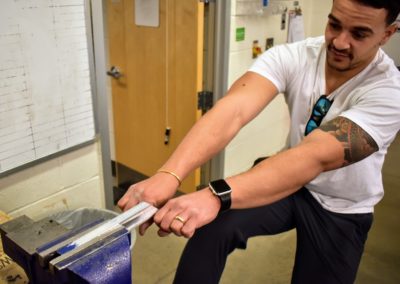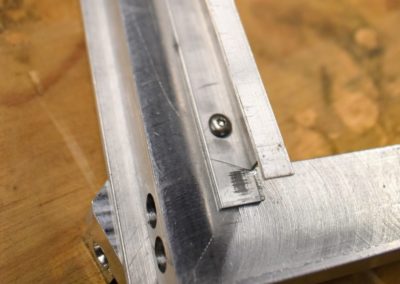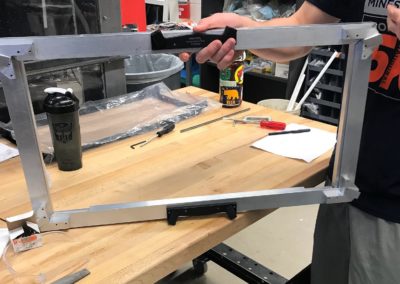Chimera Universal Lighting Bracket
Overview
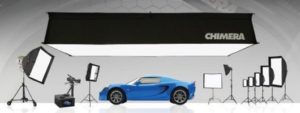 Chimera Lighting is a small to mid-size company based in Erie, Colorado with a big presence in the professional lighting world. They design and produce lighting solutions for the photography and film industry and their lighting bank and frame designs are the centerpiece of our team’s challenge.
Chimera Lighting is a small to mid-size company based in Erie, Colorado with a big presence in the professional lighting world. They design and produce lighting solutions for the photography and film industry and their lighting bank and frame designs are the centerpiece of our team’s challenge.
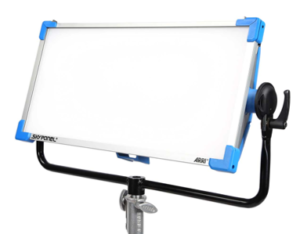 In order to understand the challenge, it is critical to analyze the lights Chimera’s products attach to. It is important to realize that Chimera does not produce the lights themselves, they only produce the light’s accessories. This means Chimera must make their products compatible with other companies designs. In fact, more than ten companies produce well known lights within the industry and the 1 by 2 size light (roughly 1’ by 2’ in outer dimensions) has become an extremely popular light size because of its relatively small size and powerful capabilities. Unfortunately, the exact dimensions of the 1 by 2 lights vary by as much as ten inches and each one has a unique method of attaching accessories.
In order to understand the challenge, it is critical to analyze the lights Chimera’s products attach to. It is important to realize that Chimera does not produce the lights themselves, they only produce the light’s accessories. This means Chimera must make their products compatible with other companies designs. In fact, more than ten companies produce well known lights within the industry and the 1 by 2 size light (roughly 1’ by 2’ in outer dimensions) has become an extremely popular light size because of its relatively small size and powerful capabilities. Unfortunately, the exact dimensions of the 1 by 2 lights vary by as much as ten inches and each one has a unique method of attaching accessories.
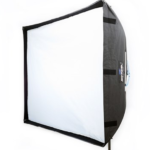 The most common light accessory is the light bank. The purpose of a light bank is to concentrate the light into one direction. Without it, the light would disperse in all directions and result in less crisp, suboptimal lighting. Chimera’s banks, come in two models, the Octa Bank which is supported by eight poles within the fabric forming an octagon and the rectangular design which is supported by four poles as seen at the right.
The most common light accessory is the light bank. The purpose of a light bank is to concentrate the light into one direction. Without it, the light would disperse in all directions and result in less crisp, suboptimal lighting. Chimera’s banks, come in two models, the Octa Bank which is supported by eight poles within the fabric forming an octagon and the rectangular design which is supported by four poles as seen at the right.
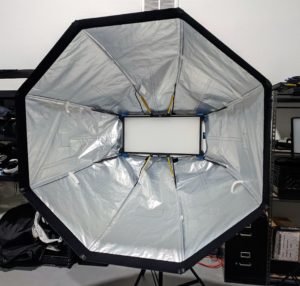 The team’s goal was to make a frame that allows for the connection of both the rectangular and Octa bank (seen on the left) with all types of 1 by 2 lights. Currently, because of the slight differences within the 1 by 2 lights, Chimera is required to produce a frame for each different light and have different corner brackets for the two bank options. (The corner brackets are how the frame connects to the bank. The Octa Bank and rectangular bank require slightly different corner brackets.) Producing a different frame for each light is not economically favorable since small production levels of several designs is more expensive than mass production of a single product. Therefore, Chimera requested the team develop a universal frame that connects both the Octa bank and rectangular bank with as many 1 by 2 style lights as possible. In addition to the main requirement, Chimera had a few additional requests:
The team’s goal was to make a frame that allows for the connection of both the rectangular and Octa bank (seen on the left) with all types of 1 by 2 lights. Currently, because of the slight differences within the 1 by 2 lights, Chimera is required to produce a frame for each different light and have different corner brackets for the two bank options. (The corner brackets are how the frame connects to the bank. The Octa Bank and rectangular bank require slightly different corner brackets.) Producing a different frame for each light is not economically favorable since small production levels of several designs is more expensive than mass production of a single product. Therefore, Chimera requested the team develop a universal frame that connects both the Octa bank and rectangular bank with as many 1 by 2 style lights as possible. In addition to the main requirement, Chimera had a few additional requests:
- Toolless operation – In order to ensure the product was easy to use could be adjusted on site
- Frame weight of less than five pounds – In order to reduce the stresses acting on the light
- Less than $100 on initial annual volume of 250 units – In order to make product cost competitive with the current solution
- Develop a working prototype – In order to test the proof of concept
- Finalize a drawing package suitable for RFQ’s to vendor manufacturers – In order to prepare for large scale production
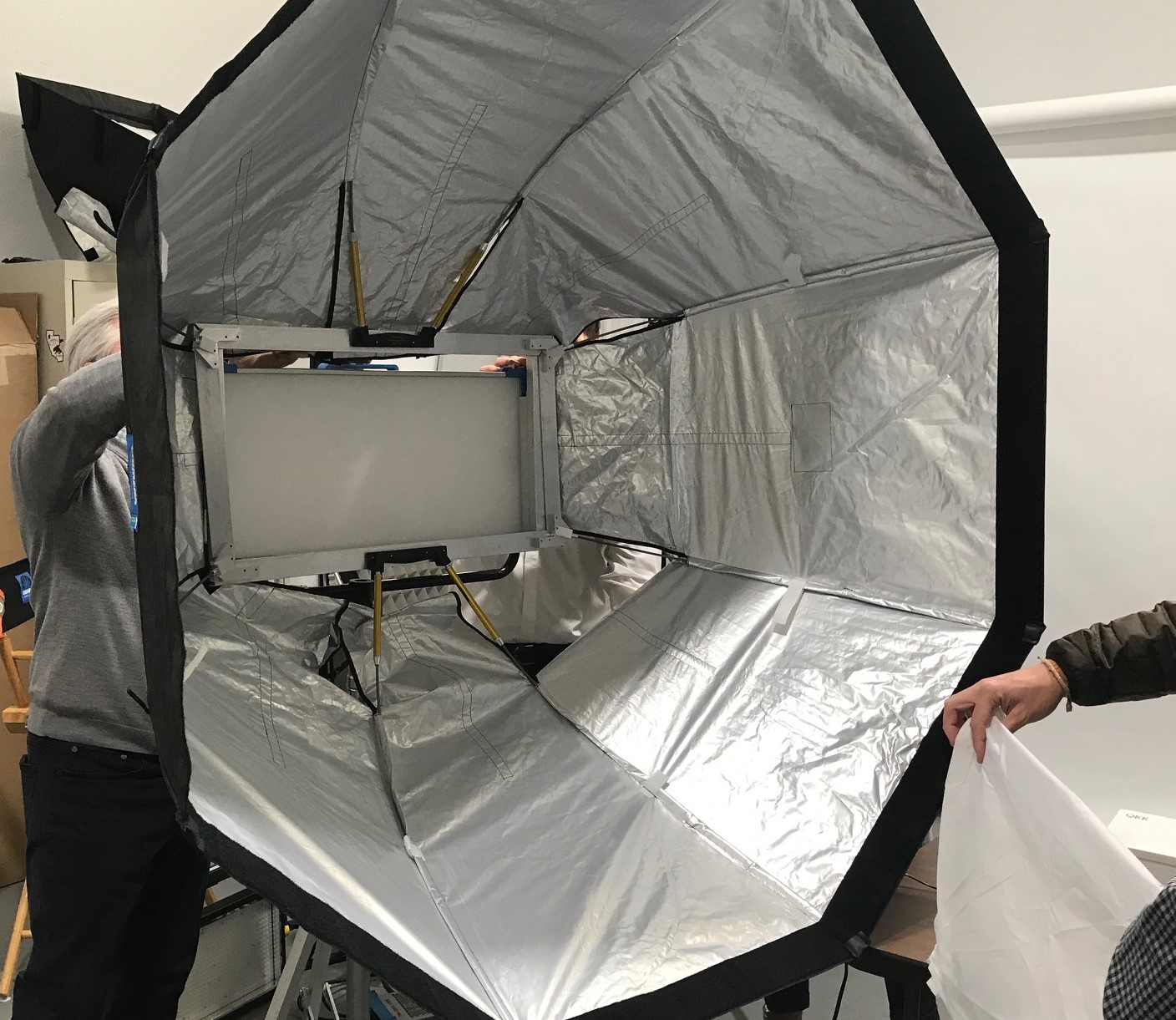
Team Members:
- Colton Spomer
- Paul Hentges
- Riley Allsop
- Will Williams
- Brandon Price
- Luke Maka
The Client:
- Chimera Lighting
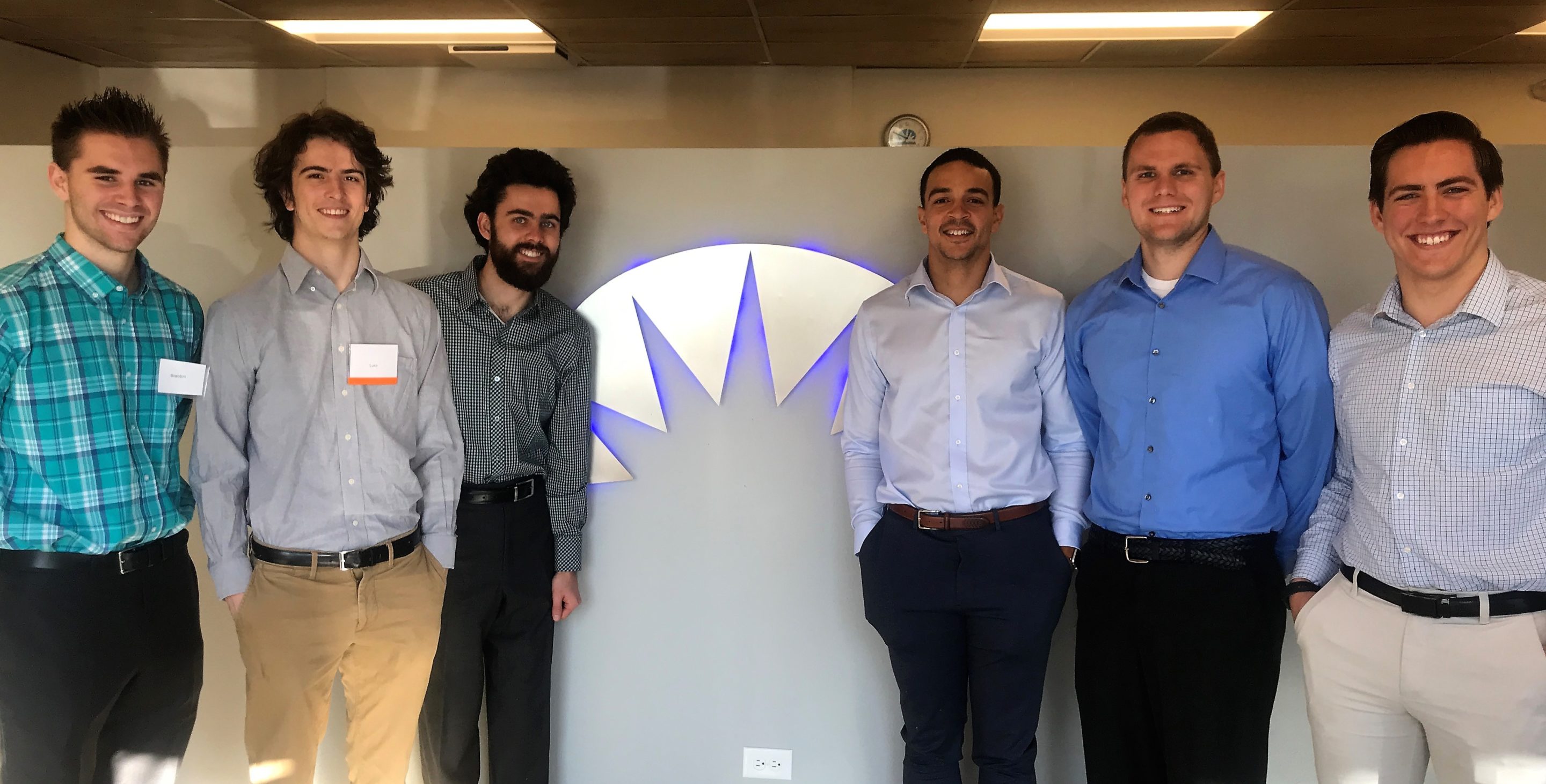
Acknowledgements
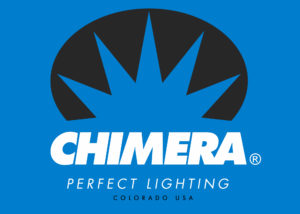
The team would like to thank everyone who helped make this project possible. Our client, Chimera, was absolutely wonderful throughout this process. They consistently gave us the support we needed in a timely manner to create the best possible final product. We would also like to thank our PA, Adam Duran, who always asked us the tough questions in order to prepare us for potential design concerns. He constantly kept the team thinking and provided all the support we needed. We couldn’t have asked for a better PA. Finally, we would like to thank the countless Mines’ faculty members who helped us along the way. From mechanical engineering professors who answered design related questions, to the countless machine shop TA’s who helped direct our work within the shop, we truly appreciate all the help we’ve received from Colorado School of Mines employees.
Elevator Pitch
Below is a short video where the Chimera Universal Lighting Frame team describes the problem, the process, and the final design solution.
Design Approach
The first semester of Senior Design was spent tackling the design challenges the team encountered during the ideation process. Numerous solutions were proposed for creating a strong, yet adjustable frame. In order to analyze a series of different possibilities, each teammate developed a unique design proposal and pitched it to the rest of the team.
Throughout the design phase, all analysis was centered around the client’s main requirements. In addition to those listed above, Chimera also wanted the product to be extremely user friendly, structurally rigid but maintain a weight of under five pounds, and to be aesthetically pleasing. Throughout the design process, all conversations revolved around the client’s wants so constant communication with Chimera was a necessity. Using a series of decision matrices that focused on the client’s key requirement list, the team whittled the proposals down to two final ideas that were presented to Chimera during the preliminary design review. Ultimately, a single design was selected for further development and prototyping because of its engineering feasibility, low cost, and ease of use. In comparison to all other options, we are confident, the design is the most structurally sound, cost effective, and easy to understand design.
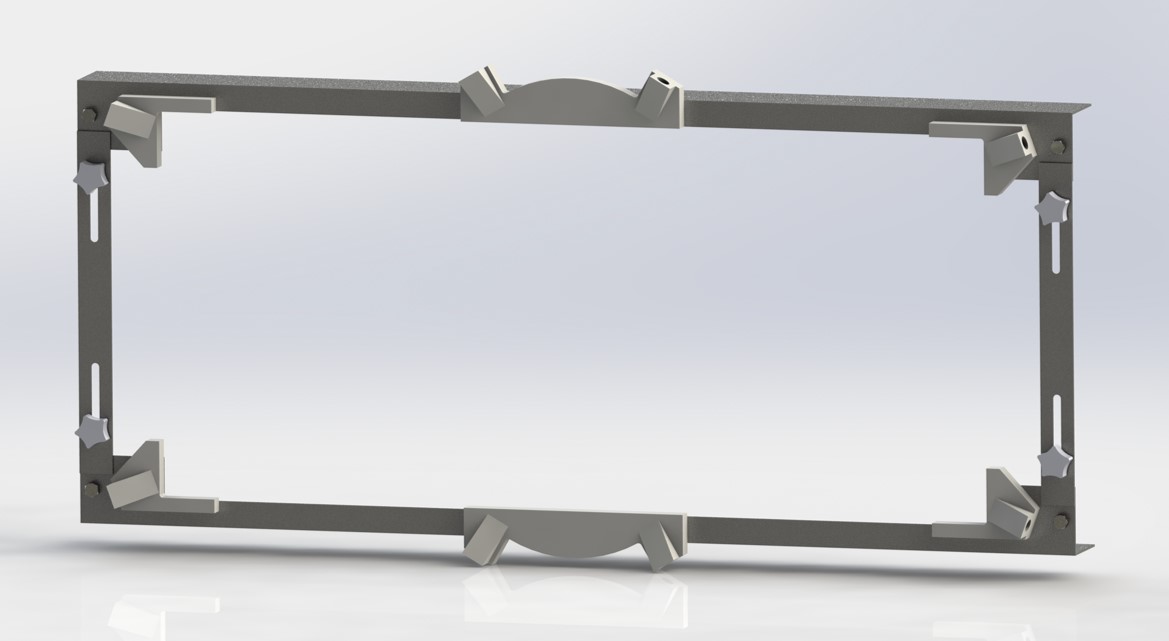
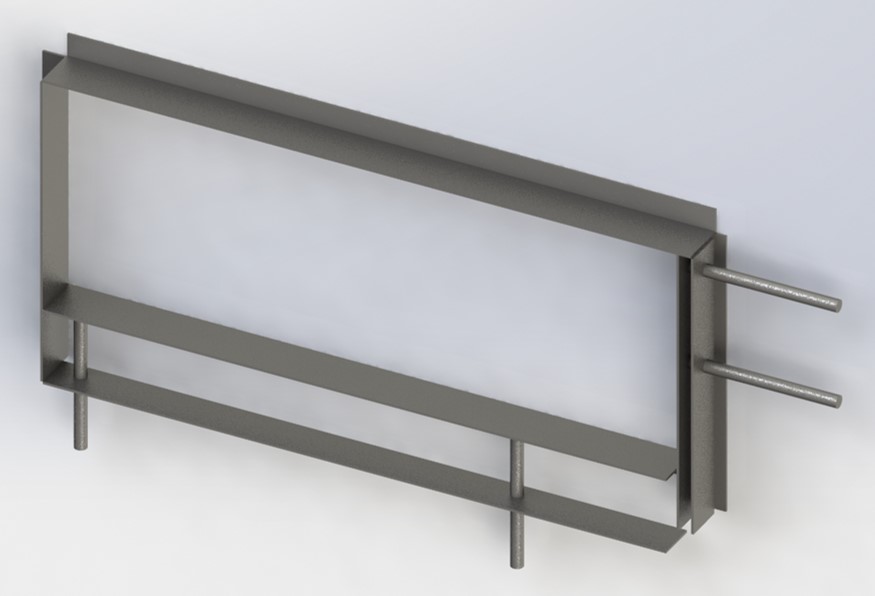
Design Solution
The chosen design centers around a rack and pinion system that allows a portion of the frame to adjust horizontally to the various sizes of lighting fixtures. As seen in the accompanying pictures, the frame consists of two main subcomponents: a rigid portion and an adjustable portion. The rigid portion is the outermost part of the design. This area stays fixed regardless of the motion of the rack and pinion and is how the design connects with Chimera’s accessories (The Octa bank and rectangular bank). The rack and pinion, also shown, is connected to the adjustable portion of the frame and has several key advantages. First, it allows the user to adjust to the frame size without any tools. A user can simply push or pull the adjustable portion of the frame until the desired width is achieved. Second, the rack and pinion expansion design guarantees the light will sit perfectly in the middle of the frame which is vitally important for the light to be properly distributed. If the frame and bank sat off-center, the light would not be evenly distributed, and the result could be odd shadows and dark spots on a photography or film set. But because of the rack and pinion, the user is only required to pull one side of the adjustable portion and the other side will adjust with perfect symmetry. Finally, because of the relatively low cost of rack and pinions, the team was able to keep costs low with this design.
Other key features of the design include the stopping mechanism, the sliding rails, and the corner brackets. The stopping mechanism, a small thumb screw, locks the system in place when the desired width is achieved. The sliding rails which sit along the adjustable portion of the frame guarantee a safe and secure connection to the compatible lights. Finally, the corner brackets, seen above, are an innovative way to connect the frame with Chimera’s accessories. Prior to these universal brackets, different brackets were needed depending on which Chimera accessory was being used.
Nearly all the design goals were achieved with the first prototype. The frame was easy to use, compatible with different Chimera accessories, and worked with six different lights which make up over 90% of Chimera’s current market. The only goals not fully achieved were the weight and cost goals. The prototype weighed roughly ten pounds, double the client’s request. However, after further redesign, significant amounts of material were deemed unnecessary and were removed for the final design. This resulted in a final design weight of roughly five pounds. The cost goals were more challenging. The first prototype cost around $175 plus manufacturing time; however, the second prototype was estimated to cost only $75 dollars plus manufacturing time. Unfortunately, it was never created due to COVID-19 closures. Ultimately, the final proposal will achieve nearly all the goals outlined by the client at the beginning of the project. Cost, however, will be the final factor as to whether Chimera proceeds with the project moving forward.
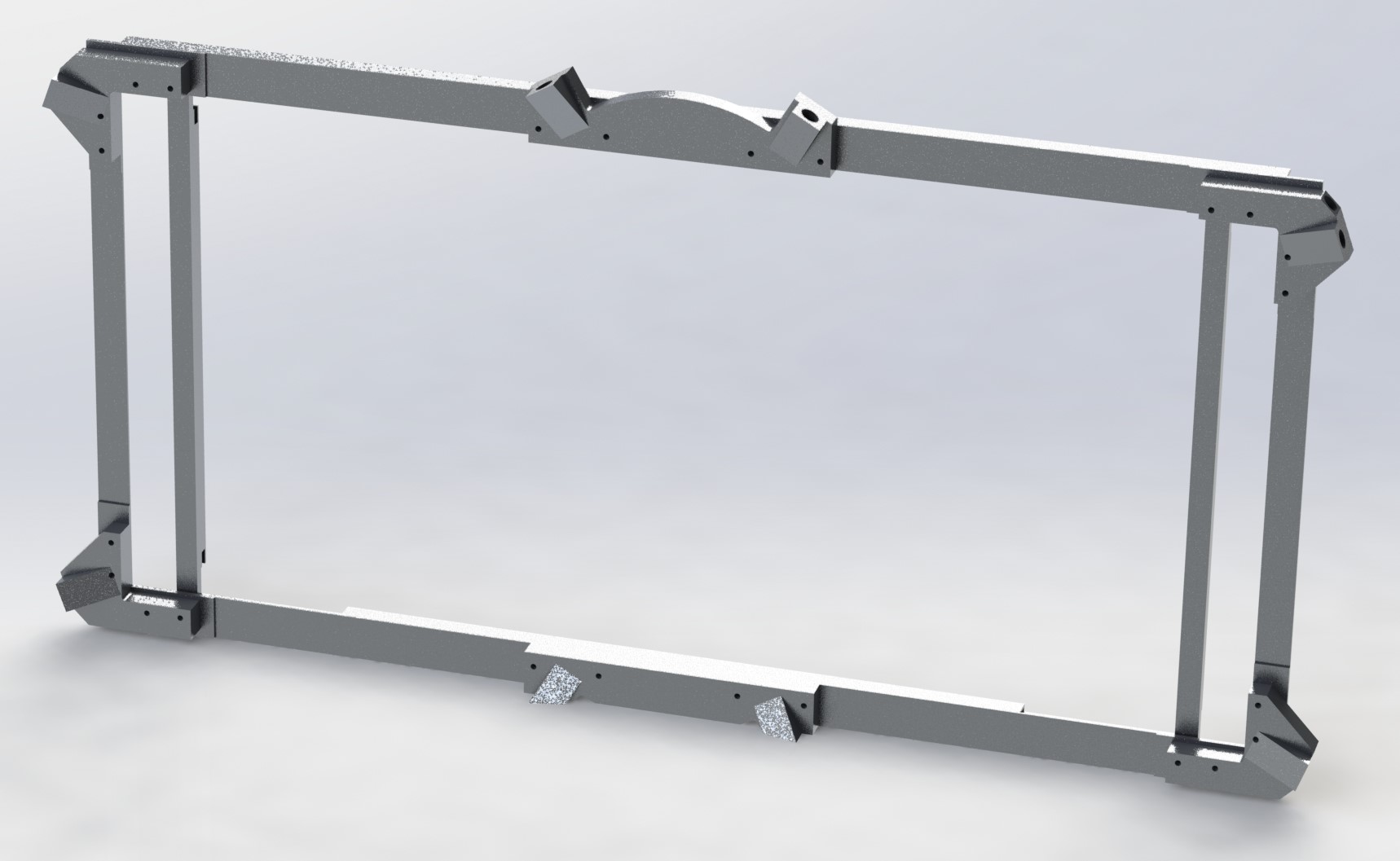
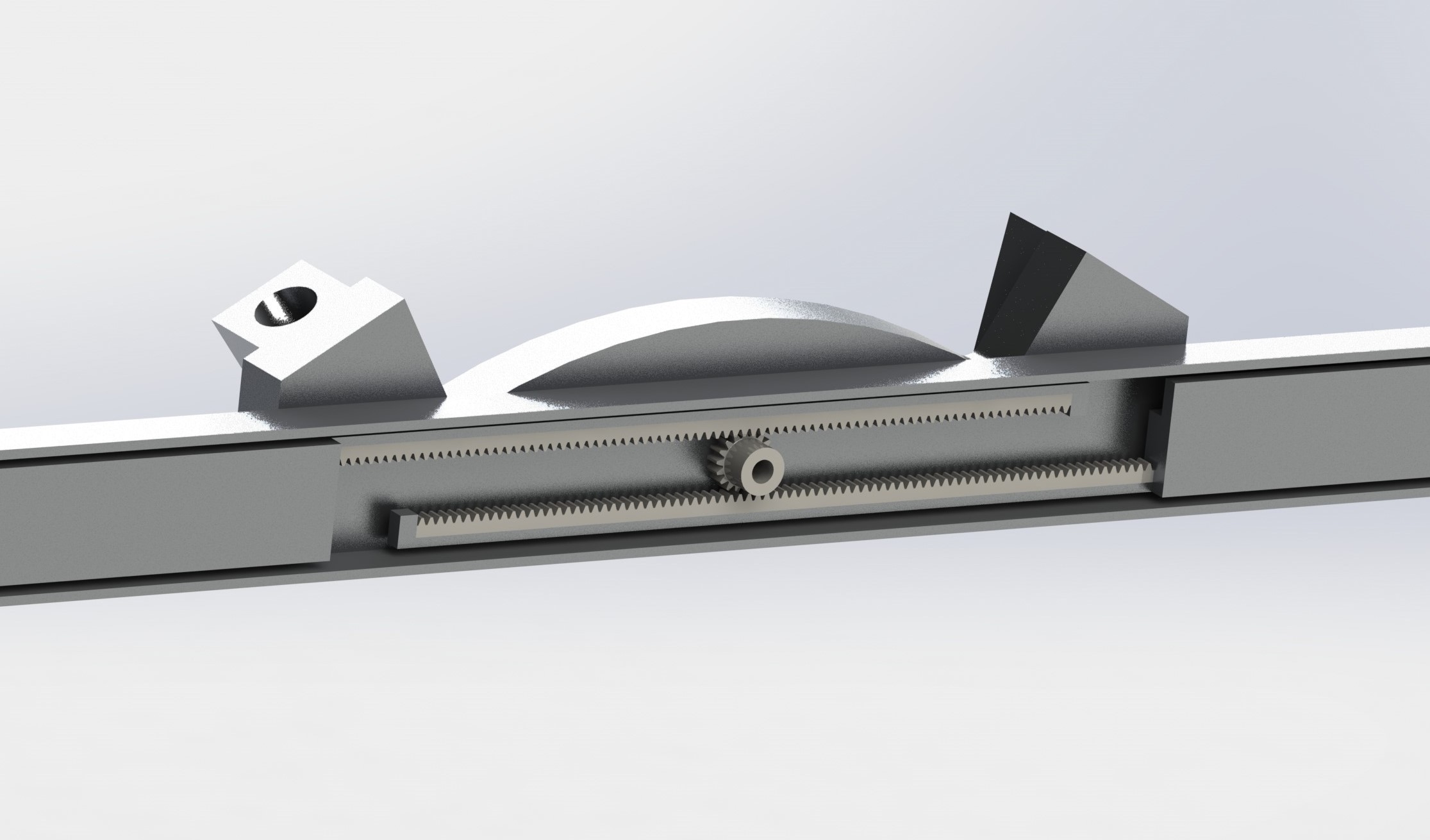
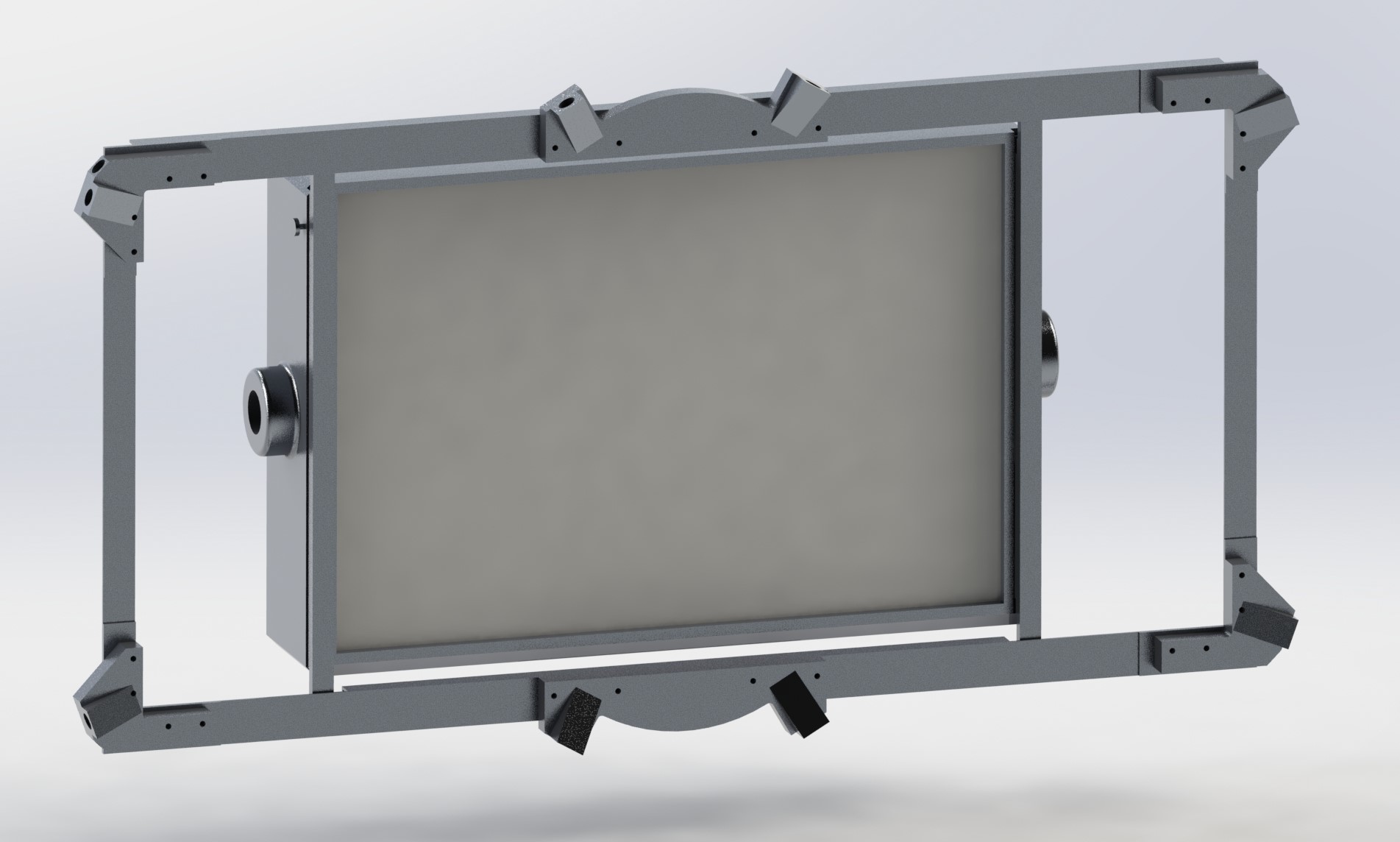
Next Steps
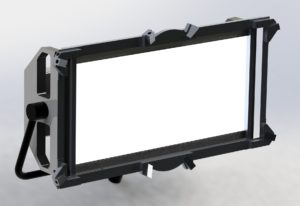 Moving forward, the final design needs to be prototyped and tested. Due to COVID-19, the team was not able to produce the second, final prototype and instead are relying on SolidWorks simulations and hand calculations to demonstrate and validate the 2nd iteration of the design. We recommend Chimera move forward with this design and have manufacturers create a prototype from the final design proposal. The prototype can then be tested for strength and compatibility and additional updates can be made. From there, Chimera will need to create several frames and send them out to clients for feedback. Updates can be made, and more feedback can be taken in. This will be an iterative process, but our design gives Chimera an excellent starting point and allows them to determine if this idea is truly economically advantageous for their company.
Moving forward, the final design needs to be prototyped and tested. Due to COVID-19, the team was not able to produce the second, final prototype and instead are relying on SolidWorks simulations and hand calculations to demonstrate and validate the 2nd iteration of the design. We recommend Chimera move forward with this design and have manufacturers create a prototype from the final design proposal. The prototype can then be tested for strength and compatibility and additional updates can be made. From there, Chimera will need to create several frames and send them out to clients for feedback. Updates can be made, and more feedback can be taken in. This will be an iterative process, but our design gives Chimera an excellent starting point and allows them to determine if this idea is truly economically advantageous for their company.
Meet the Team
Colton Spomer
 Colton Spomer was born in Littleton Colorado where he grew up until starting college at the Colorado School of Mines. He knew from a young age that he wanted to attend the School of Mines for his Undergraduate Degree. He transferred into Mines from Red Rocks Community College in 2017 and is now a senior in Mechanical Engineering who will graduate in May of 2020. He has recently accepted a job at Lockheed Martin where he will be a Stress Analyst for the Orion Crew module.
Colton Spomer was born in Littleton Colorado where he grew up until starting college at the Colorado School of Mines. He knew from a young age that he wanted to attend the School of Mines for his Undergraduate Degree. He transferred into Mines from Red Rocks Community College in 2017 and is now a senior in Mechanical Engineering who will graduate in May of 2020. He has recently accepted a job at Lockheed Martin where he will be a Stress Analyst for the Orion Crew module.
Paul Hentges
 Paul is a senior in Mechanical Engineering graduating in May of 2020. He enjoys outdoor activities such as hiking and fishing as well as playing and watching sports. Following graduation, Paul plans on moving back home to Anchorage and beginning a career with ConocoPhillips.
Paul is a senior in Mechanical Engineering graduating in May of 2020. He enjoys outdoor activities such as hiking and fishing as well as playing and watching sports. Following graduation, Paul plans on moving back home to Anchorage and beginning a career with ConocoPhillips.
Riley Allsop
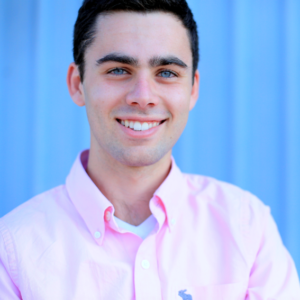 Riley is a Mechanical Engineering student nearing the end of his degree. Riley acted as the lead communicator and facilitated interactions between all parties involved in the project. After graduation, he plans to pursue a career in the design engineering world. He enjoys the outdoors and engaging with friends and family and plans to move back to Seattle after graduating from Colorado School of Mines this summer.
Riley is a Mechanical Engineering student nearing the end of his degree. Riley acted as the lead communicator and facilitated interactions between all parties involved in the project. After graduation, he plans to pursue a career in the design engineering world. He enjoys the outdoors and engaging with friends and family and plans to move back to Seattle after graduating from Colorado School of Mines this summer.
William Williams
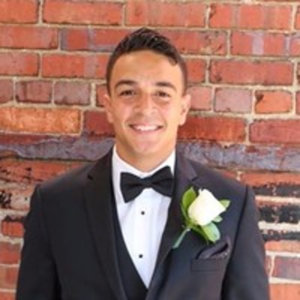 William was born and raised in Denver CO , William is a senior graduating May 2020 with a degree in Mechanical Engineering. William had a roundabout way of coming to Mines, his first degree was in Philosophy from St. Andrews Prysberterain College, in Laurinburg N.C.. After graduating Wiliam pursued a career in soccer playing three years professionally in Portugal before returning to the states to further his education. William is married, and has one dog, they currently reside in the Capitol Hill neighborhood of Denver Colorado.
William was born and raised in Denver CO , William is a senior graduating May 2020 with a degree in Mechanical Engineering. William had a roundabout way of coming to Mines, his first degree was in Philosophy from St. Andrews Prysberterain College, in Laurinburg N.C.. After graduating Wiliam pursued a career in soccer playing three years professionally in Portugal before returning to the states to further his education. William is married, and has one dog, they currently reside in the Capitol Hill neighborhood of Denver Colorado.
Brandon Price
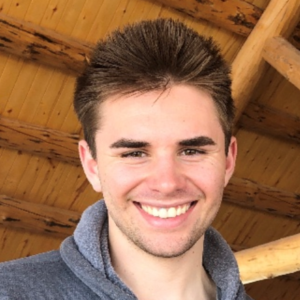 Brandon is a Mechanical Engineering major and came to Mines from Atlanta, Georgia. He plans on extending his educational experience at Mines for another year to pursue a Master’s Degree of Science in Mechanical Engineering. He is especially passionate about design and optimization work and will be studying Thermal and Fluid systems as a graduate student. Later on, he hopes that he will have an exciting and fulfilling career, and is open to relocating to just about anywhere in the United States.
Brandon is a Mechanical Engineering major and came to Mines from Atlanta, Georgia. He plans on extending his educational experience at Mines for another year to pursue a Master’s Degree of Science in Mechanical Engineering. He is especially passionate about design and optimization work and will be studying Thermal and Fluid systems as a graduate student. Later on, he hopes that he will have an exciting and fulfilling career, and is open to relocating to just about anywhere in the United States.
Luke Maka
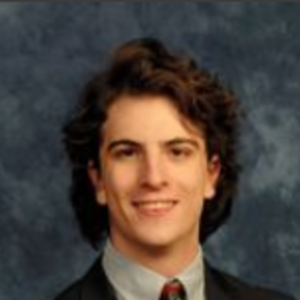 Luke was born in Lombard Illinois and he is currently a senior in Mechanical Engineering set to graduate in 2020. On campus Luke is a member of Kappa Sigma and several other extracurricular clubs and engineering societies. In his free time Luke enjoys making music and playing outdoor sports. After his internship experience with Kiewit, Luke plans to pursue a career in the construction field.
Luke was born in Lombard Illinois and he is currently a senior in Mechanical Engineering set to graduate in 2020. On campus Luke is a member of Kappa Sigma and several other extracurricular clubs and engineering societies. In his free time Luke enjoys making music and playing outdoor sports. After his internship experience with Kiewit, Luke plans to pursue a career in the construction field.
